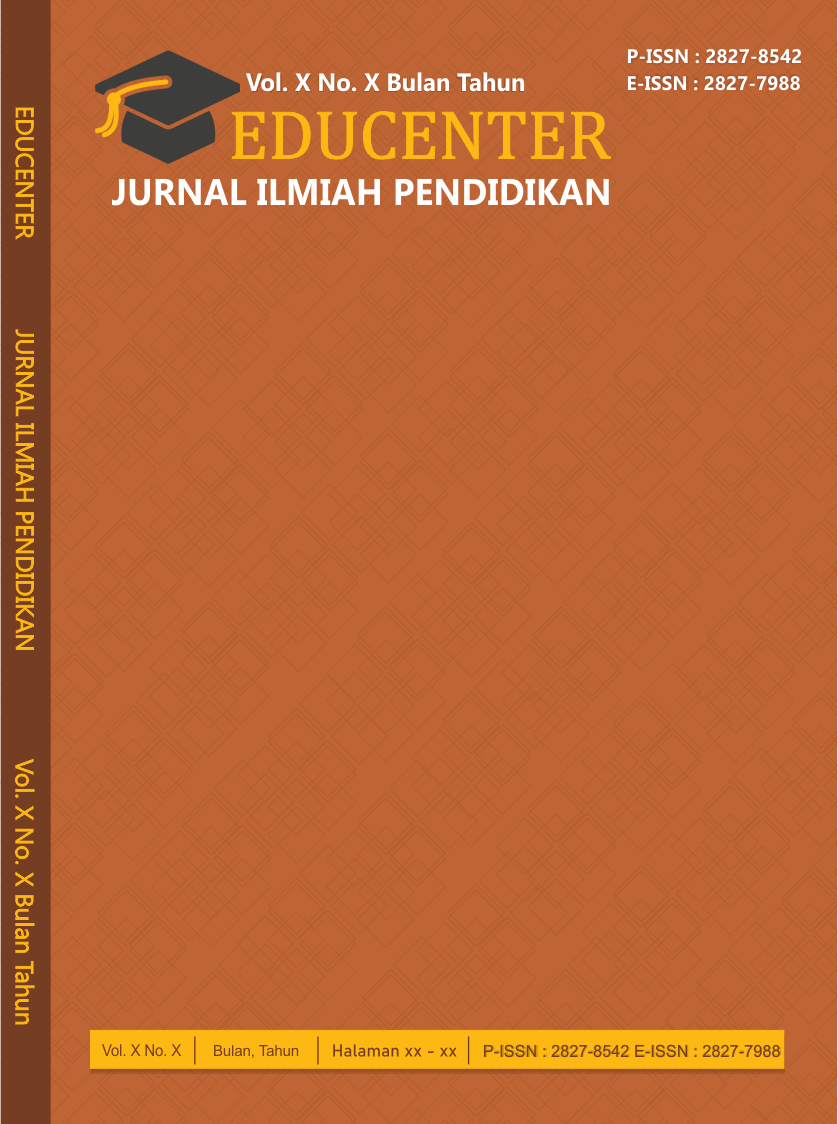Pengembangan materi ajar fisika berbasis multirepresentasi untuk meningkatkan kemampuan berpikir analisis peserta didik di MAN 2 Makassar
Main Article Content
Abstract
This study aims to determine the validity of the product of multi-representation-based teaching materials, to determine the teacher's response to multi-representation-based teaching materials, to determine the students' responses to multi-representation-based teaching materials and to determine the effectiveness of multi-representation-based physics teaching materials. improve students' analytical thinking skills at MAN 2 Makassar. The experimental subjects of this study were 25 students of class X MIPA II MAN 2 Makassar. This research uses the ADDIE model development. The instruments used in this study were a multi-representation-based physics teaching material validation sheet, a teacher and student response questionnaire sheet, and a physics learning outcome test instrument. The results showed that the multi-representation-based physics teaching material in physics learning in class X MIPA II MAN 2 Makassar was valid with a validity content value of 0.74, the assessment of the educator's response to multi-representation-based physics teaching materials was in the very good/very practical category, response assessment students to multi-representationbased physics teaching materials are in the very good/practical category, the effectiveness of using multi-representation-based physics teaching materials is in the very good category. The effectiveness of multi-representation-based Physics teaching materials in learning is shown from the results of the Physics learning test with a percentage of 68% being above the KKM value
Article Details
Section

This work is licensed under a Creative Commons Attribution-NonCommercial 4.0 International License.
How to Cite
References
Aiken, L. R. (1985). Three coefficients for Analyzing the reliability and validity of ratings. Educational and Psychological Measurement, 45(1), 131–142. https://doi.org/10.1177/0013164485451012
Ainsworth, S. (1999). The functions of multiple representations. Computers & Education, 33(2–3), 131–152. https://doi.org/10.1016/S0360-1315(99)00029-9
Areesophonpichet, S. (2013). A development of analytical thinking skills of graduate students by using concept mapping. The Asian Conference on Education, 1, 15.
Branch, R. M. (2009). Develop. In Instructional Design: The ADDIE Approach (pp. 82–131). Springer US. https://doi.org/10.1007/978-0-387-09506-6_4
Depdiknas. (2007). Pedoman pengembangan tes diagnostik mata pelajaran IPA SMP/MTs. Direktorat Jenderal Manajemen Pendidikan Dasar dan Menengah.
Goldin, G. A. (2002). Representation in mathematical learning and problem solving, w: LD English (red.), Handbook of international research in mathematics education. Lawrence Erlbaum Associates, Mahwah, New Jersey, London.
Kharisma, J. Y., & Asman, A. (2018). Pengembangan bahan ajar matematika berbasis masalah berorientasi pada kemampuan pemecahan masalah matematis dan prestasi belajar matematika. Indonesian Journal of Mathematics Education, 1(1), 34–46.
Magdalena, I., Prabandani, R. O., Rini, E. S., Fitriani, M. A., & Putri, A. A. (2020). Analisis pengembangan bahan ajar. Nusantara, 2(2), 180–187. https://ejournal.stitpn.ac.id/index.php/nusantara/article/view/805
Mukarramah, M., Verawati, N., & Harjono, A. (2019). Pengaruh model pembelajaran core terhadap penguasaan konsep fisika peserta didik kelas XI MAN Lombok Barat. Jurnal Pijar Mipa, 14(3), 176–183.
Nadrah, N. (2022). Kemampuan menyelesaikan soal-soal fisika melalui model pembelajaran kooperatif. Jurnal Basicedu, 6(2), 1529–1540.
Permatasari, K. G. (2021). Problematika pembelajaran matematika di sekolah dasar/Madrasah Ibtidaiyah. Jurnal Pedagogy, 14(2), 68–84. https://jurnal.staimuhblora.ac.id/index.php/pedagogy/article/view/96
Prastowo, A. (2019). Panduan kreatif membuat bahan ajar inovatif menciptakan metode pembelajaran yang menarik dan menyenangkan. DIVA press.
Ramdani, Y. (2012). Pengembangan instrumen dan bahan ajar untuk meningkatkan kemampuan komunikasi, penalaran, dan koneksi matematis dalam konsep integral. Jurnal Penelitian Pendidikan, 13(1), 44–52.
Waldrip, B., & Prain, V. (2012). Learning from and through representations in science. In Second International Handbook of Science Education (pp. 145–155). Springer Netherlands. https://doi.org/10.1007/978-1-4020-9041-7_12
Yusup, M. (2009). Multirepresentasi dalam pembelajaran fisika. Prosiding Seminar Nasional Pendidikan FKIP Unsri, 1–7.

